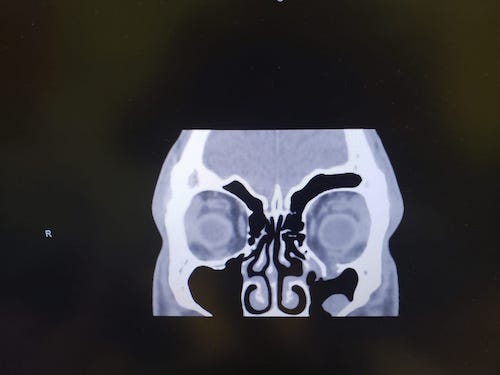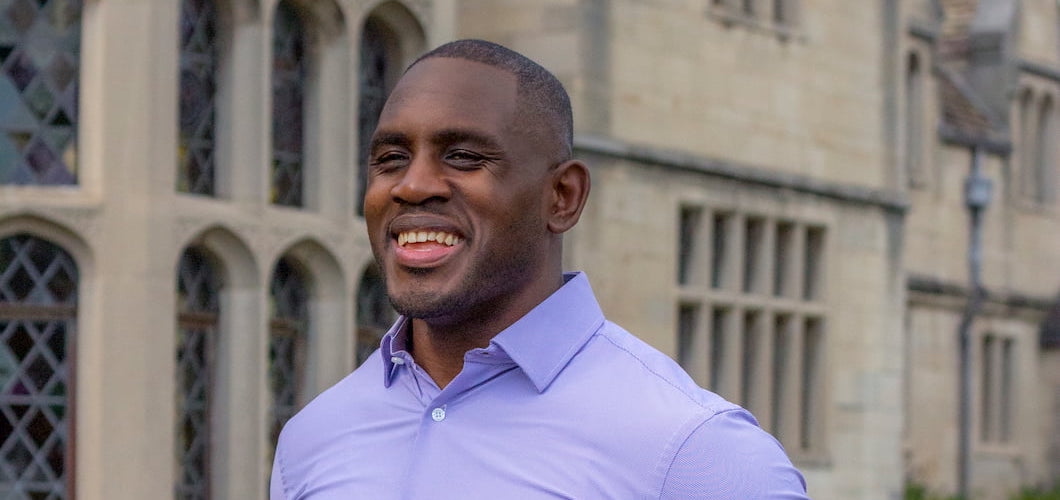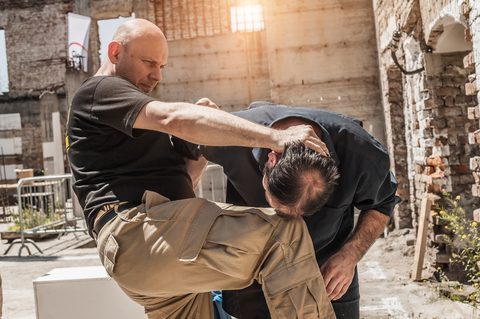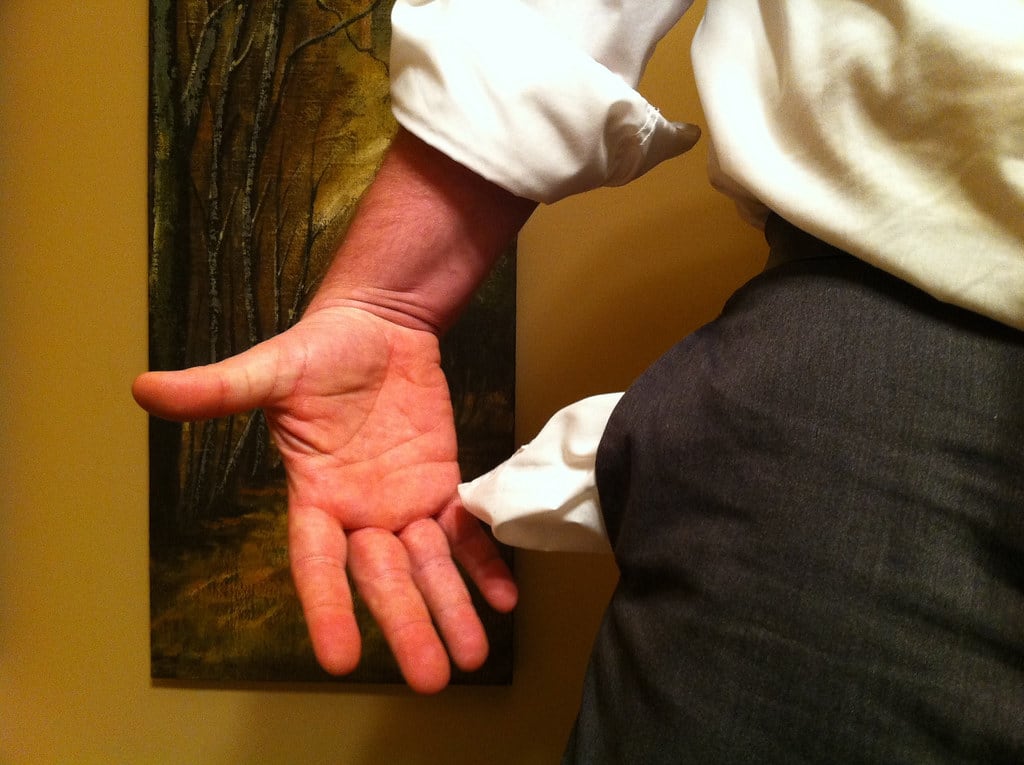Many people associate pain with defeat, loss, and failure. Boxers, on the other hand, develop a different relationship with pain.
There is nothing quite like the pain you experience during the hard work of pushing your body to its limits. The conditioning and preparation that goes into being a good boxer is incredibly difficult, unpleasant, and painful. This, itself, isn’t surprising.
What is perhaps more surprising is how many athletes across all sports have a similar experience.
Many competitive athletes would rather play their sport than ever practice it. This feeling is best summarized in a quote by hall of fame linebacker Ray Lewis:
“You pay me for Monday through Saturday. I do Sunday for free.”
The idea is that practice is miserable but performance is fun. In a perfect world, we’d only show up at game time, have the performance of a lifetime, and that would be it. However, you can’t perform if you don’t practice and you can’t get through practice without pain.
“You don’t rise to the level of the competition. You fall to the level of your training.”
-U.S. Navy Seals
Boxing Lessons on Grit, Resilience, and Antifragility
In this e-book, I teach you 20 mindset lessons I learned from my 13-1-1 professional heavyweight boxing career.
Use these to conquer any challenges you face, in the ring or in life.
Learn how to develop the mindset of a fighter, from a fighter, so you can win the battles you face.

1) Fulfilling experiences require suffering
Once you go through the pain of preparation, then there is the actual event. The winner of a contest hurts just as much as—and often more than—the loser. Pain simply becomes part of the life of a boxer.
Through the course of a match, boxers routinely battled through concussions, major contusions, bruised kidneys, swollen eyes, cut eyebrows, and on rare occasions, fighters even will battle through injuries that require reconstructive surgery.
Fighters come to terms with the idea that they will experience pain. There are no pleasant experiences in fighting. Only fulfilling ones. And the more fulfilling the experience, the more pain you likely had to experience.
While it may not be the same pain as the physical pain from a fractured orbital bone, most things in life carry a similar expectation and exchange.
The more fulfilling the experience, the more pain you have to suffer through to attain it. Sometimes it’s the pain of restraint. Other times, it’s the pain of sacrifice. But the cost of all pleasantries in life is pain.
The average person tries to avoid pain. This is why the average person leads an unfulfilled life.
2) Pushing through the pain is where the progress happen
In boxing, short of a quick knockout, I cannot win without getting hit. Getting hit by a guy trained to fight is never going to be pleasant.
I can defend his shots, but I still have nerves in my arms and hands. As the fight goes on, I’ll inevitably get hit and all of those hits will hurt. I can not experience the glory of victory without suffering pain.
This is a powerful analogy and lesson for life. If you want to make more money, you have to experience the discomfort of pushing your mind and body to the limit to acquire skills and log hours as you create a product, launch a business, or win a competition.
To make friends and meet lovers, you have to endure the pain of social awkwardness and push forward even though it may not work out. To be healthy, you have to endure the pain of self-discipline in your workout routine and moderation in your consumption.
To have a noteworthy life, you must accomplish noteworthy things. Accomplishing noteworthy things means you must endure noteworthy pain because it’s the only way to acquire noteworthy rewards.
“The pain you feel today will be the strength you feel tomorrow.”
-Arnold Schwarzenegger
3) Pain transforms you when you embrace it
Something remarkable happens when you embrace the more difficult and potentially painful path.
It slowly but surely becomes easier to do things that are painful. It becomes easier to do painful things because not only do you begin to see the results of your suffering, but you also form the habit of doing what is difficult but necessary.
You start out slowly, making one painful but necessary decision in your life but one that leads to an excellent result. Seeing the result is a good experience that makes you more likely to choose the difficult choice in the future. When it comes time to make the difficult decision again, you do it but with a little less internal resistance. This is how the habit of enduring temporary suffering for long-term gain begins.
This process is never quick. Like any habit, it takes time to build. Furthermore, the results don’t happen instantly.
Changing your body takes time, changing your social and love life takes time and changing your income level takes time. But getting small victories along the way as a result of the effort you put in makes enduring future pain easier.
4) Pushing through the pain comes with unique benefits
I tell guys all the time that running has never been enjoyable to me.
They say some people experience a runner’s high, but I’m not one of them. However, not only do I run 5-6 days a week, I don’t have to force myself to do it either. I embrace the pain of running (the physical strain and oftentimes boredom) because it improves my mental clarity and physical abilities. Those benefits take a while to see, but I have to stick with it for a while to see a result. The same is true in boxing.

Then the benefits I get from running spill over and give me secondary benefits.
For my boxing training, I increase my endurance which allows me to endure more pain as I spar and train. This allows me to spend more time hurting in practice so I can become a better fighter. If I’m a better fighter, then I can perform better during a fight.
I believe that most people are capable of running 5 miles, regardless of their level of training. It’s only their mental barriers that make them believe otherwise. If you pushed yourself through this pain, you’d realize that being hurt is no big deal.
This leads nicely into the next truth about pain.
5) Not all pain is the same
Most people view pain as a response to something being wrong. This is not entirely correct.
Not all pain is the same. The type of pain you experience determines the best response.
Pain is the way you know that you’re being strained past your comfort zone. It’s a sign that you have moved beyond the borders that you’re used to. This pain is a sign that you’re in the “Goldilocks Zone” of growth–not so easy that you’re bored but not so difficult that it’s truly impossible.
We know that most people live in a space where life is too easy, but what happens when you go too far and enter the realm of things that are impossible for you?
If you pull or tear a muscle, you went too far out of your comfort zone. But if you just have sore muscles after working out, then you went just far enough. In both of the scenarios, you experience pain. The difference is that in the first situation, you went beyond your limits and what is possible for you.
Even if you experience injury, you learn where your limits are and how to better ride that line of maximum performance. You don’t learn and you go grow without pain. You just remain the same.
6) Emotional pain follows the same rules
Your personal life is no different.
If you try to make new friends, you can come off as too aggressive or self-centered which leads to rejection. You might feel awkward while you’re talking to new people and like you’re making a bit of a fool yourself. Some people will want nothing to do with you but others will still want to hang out. Or you can let your social anxiety win and you never meet a new person again.
In the first scenario, you push too hard and you still don’t have any new friends. However, you made a push and now you know there’s a line you can dial it back to. In the second scenario, you endure the unpleasantness of social awkwardness, but you experience the reward of making a new friend.
Only in the last scenario, where you gave into fear and embraced comfort, that nothing happens. There is no growth, change, or learning.
“No pain, no gain”
-Unknown
7) You risk chronic pain by avoiding acute pain
If I avoid the pain of working out, I may get by for a fight or two, but I will eventually pay for not pushing myself.
If I don’t push through tough workouts, I’ll never know if I have what it takes to do so in the heat of battle. During the fight, I’ll put all of my efforts into avoiding pain, then I will not fight well.
The rounds feel longer, my lungs feel like they have less air, my legs feel like stone, and my opponent’s punches hurt a little more.
I’ve seen more than a few fights where a guy gets hit and it’s not terribly hard, but it’s hard enough for him and suddenly he can’t get up. They aren’t comfortable with pain so they have developed the habit of avoiding pain.
Either you’re moving towards what you want or away from what you don’t want. Either you’re learning to embrace suffering or you’re training to live the life of a coward who is enslaved by his fear of pain.
This doesn’t mean you go looking for pain for pain’s sake. It just means that you suffer now so that you don’t have to later.
If you avoid the short-term acute pain, you’ll suffer much more in the long run.
If you waste a year, you really lose two.
— Ed Latimore (@EdLatimore) April 12, 2019
One for what you should have done then, and one to what you're missing now that you're doing it.
8) There’s a difference between being hurt and injured
When I played football the coach would ask a question whenever there was someone feeling set back by the pain that inevitably came with practice. “Are you hurt or are you injured?”
Both conditions are painful, but there is a difference. You can continue to play through being hurt. It’s merely a matter of pain tolerance. Sometimes it’s intense but not debilitating.
Injury is debilitating. Injury is an actual change in your condition that prevents performance. You cannot play through injury.
Injury is the thing you actively want to avoid if possible. These are the things that you need time out of the game to recover from. When you’re injured, continuation–even it means enduring almost no pain at all–is not possible. Sometimes being injured is more painful than being hurt. Sometimes it is less.
In boxing, the distinction is very clear.
You can suffer all match, but the referee won’t stop the fight as long as you are fighting back. But if you don’t respond to a barrage of punches for too long, then the referee can and will stop the fight. If you don’t get off the canvas, the fight is over. In both situations, you have effectively suffered an injury. Even if you aren’t in serious pain, you have demonstrated the inability to continue.

I’ve been fortunate in my boxing career.
I’ve only suffered one major injury. My experience with that highlights the difference between hurt and injury. During a routine sparring session, I took a jab to the eye. The shot wasn’t even particularly powerful and I blocked most of the impact from it, but the part that made contact with my eye was incredibly painful.
Because of my years of fighting and sparring, my relationship with pain has been altered. Most people would have probably thought something was seriously wrong, but I took it as the routine pain of boxing. I finished the sparring session a little sore, but not really under the impression that anything was wrong. Two days later when I sparred, I took a small shoulder shrug to the same eye. The pain was so intense that for the first time in my life, I stopped the sparring session.
Turns out that the little flicker of a jab that I sustained hit my eye at just the right angle and caused a blowout fracture that required surgery. The injury required surgery and nearly 16 weeks out of the ring before I could fight again. Some things are just painful and make you want to stop while others are injuries that force you to the sidelines for good.
Recap of the 8 reasons about pushing through the pain
- Fulfilling experiences require suffering
- Pushing through the pain is where the progress happen
- Pain transforms you when you embrace it
- Pushing through the pain comes with unique benefits
- Not all pain is the same
- Emotional pain is follows the same rules
- You risk chronic pain by avoiding acute pain
- There’s a difference between being hurt and injured
The best and worst things in life walk hand in hand. There is no pleasure without pain. The more you seek to avoid one, the more you forfeit the experience of the other.
What’s important is keeping the pain in perspective.
Some things merely hurt you–a lot–but they don’t destroy you. Many times, the pain actually makes you more capable in the future–if you react to it with the proper perspective. But it does not debilitate you. When you’re injured–when you truly have been broken–this is not time for despair and melodramma either.
Then it’s time to rest and to heal up for another day of fighting.
Boxing Lessons on Grit, Resilience, and Antifragility
In this e-book, I teach you 20 mindset lessons I learned from my 13-1-1 professional heavyweight boxing career.
Use these to conquer any challenges you face, in the ring or in life.
Learn how to develop the mindset of a fighter, from a fighter, so you can win the battles you face.





